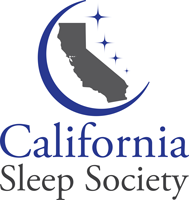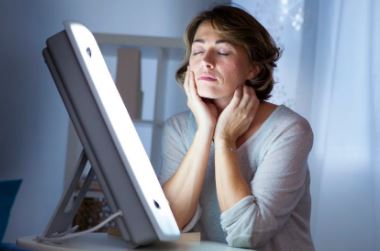By: Patrick Moday, BBA, RPSGT, RST, CCSH
“Light is to darkness what love is to fear; in the presence of one, the other disappears.” Marianne Williamson, A Year of Miracles: Daily Devotions and Reflections.
Light therapy (aka phototherapy and heliotherapy) is used to treat patients with artificial light. It is typically used to treat people with Seasonal Affective Disorder (SAD). SAD is a type of depression that’s related to changes in seasons. Symptoms start in the fall and continue into the winter months. You then become moody and have less energy.
The winter blues are very common. Many of us experience a mood shift during the colder and darker days of winter. You may find yourself feeling more lethargic and down overall. The difference between SAD and the winter blues is the winter blues won’t keep you from enjoying life.
The most common symptoms of the winter blues are general sadness and a lack of energy. Other symptoms of the winter blues include the difficulty sleeping, feeling less social than usual, and difficulty taking initiative.
The signs of SAD are sleeping too much, overeating, mood that is down or depressed, loss of interest in activities you typically enjoy, withdrawing isolating yourself from friends and family, struggling to focus and perform at work or home, feeling constantly fatigue and lethargic, feeling hopeless about the future, and having suicidal thoughts.
Seek out medical help if you think you have SAD. Your doctor may perform tests such as blood work and have you complete a SAD screening questionnaire.
Treatment for SAD may include:
- Socialize: Make plans to spend time with friends and family.
- Antidepressants: Medication used to treat possible chemical imbalances.
- Diet: Eat fruits and vegetables. Some of these foods not only give you nutrients but may boost mood. Minimize carbohydrates, sugar, salt and fatty foods that make you feel sluggish and gain weight.
- Exercise: A natural antidepressant by releasing endorphins and increasing serotonin.
- Cognitive Behavioral Therapy: An active, structured form of psychotherapy based on the idea that the way a person views the world has a major influence on his or her emotions and behavior.
- Avoid self-medicating with drugs or alcohol: These temporarily worsen symptoms.
- Sunlight: Another natural way to increase serotonin.
- Light therapy: Exposure to fluorescent light for a prescribed amount of time. This helps regulate the release of melatonin.
My personal (very unscientific method) experiment and experience with light therapy follows:
The year 2020 has given us a global pandemic, civil unrest, a cultural civil war, natural disasters, and an election year. My sleep lab was shut down in March and I was also furloughed due to the stay at home order from the state’s governor. That’s a lot to take in. So much so that I began having my own issues with sleep. I began going to bed later, my latency to sleep increased, I experienced frequent awakenings, I woke up too early, and my total sleep time decreased significantly. My circadian rhythm was off and out of sync. My sleep was down and my anxiety was up. In May, I was ordered back to work. I made a decision to try light therapy on my own.
I purchased a light therapy device online, unpacked the device, and turned it on every morning. I noticed a couple of changes after a couple weeks of use:
- Sometimes I was waking up on my own and not feeling as groggy.
- I was more alert during the day.
- I felt more motivated to accomplish tasks.
- I felt sleepy earlier.
- My sleep latency decreased.
- I was less reliant on stimulants to stay awake.
- I started taking walks with my family.
- I was calling/video conferencing friends and family to check in and check up on them.
- I began to view what was happening in the world more pragmatically and less emotionally.
I cannot say light therapy cured my insomnia because I still have bouts of insomnia. Nor do I recommend anyone to “self-medicate” with light therapy as I did.
What I can say is this: I used to be in a dark place and now I’m not.

